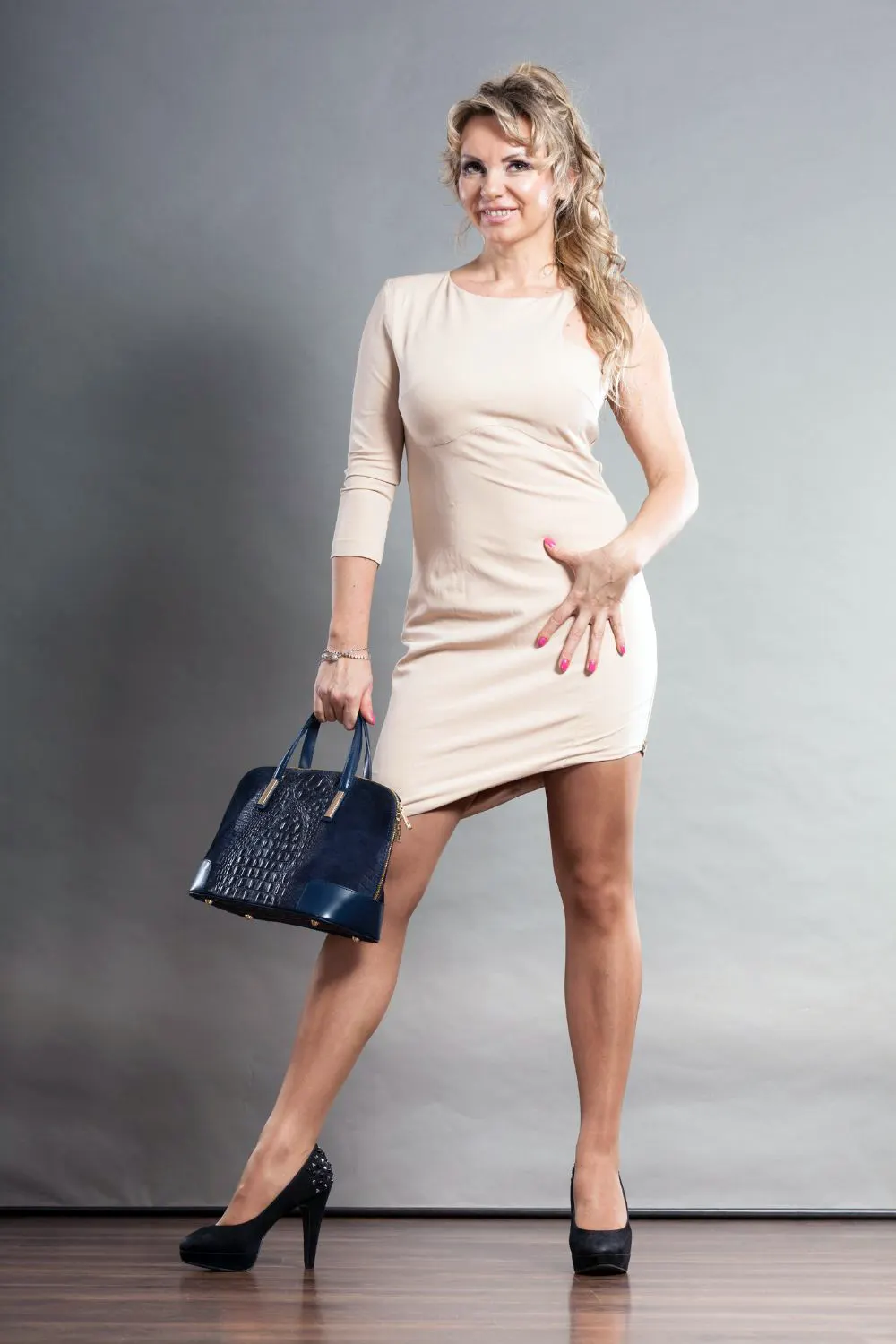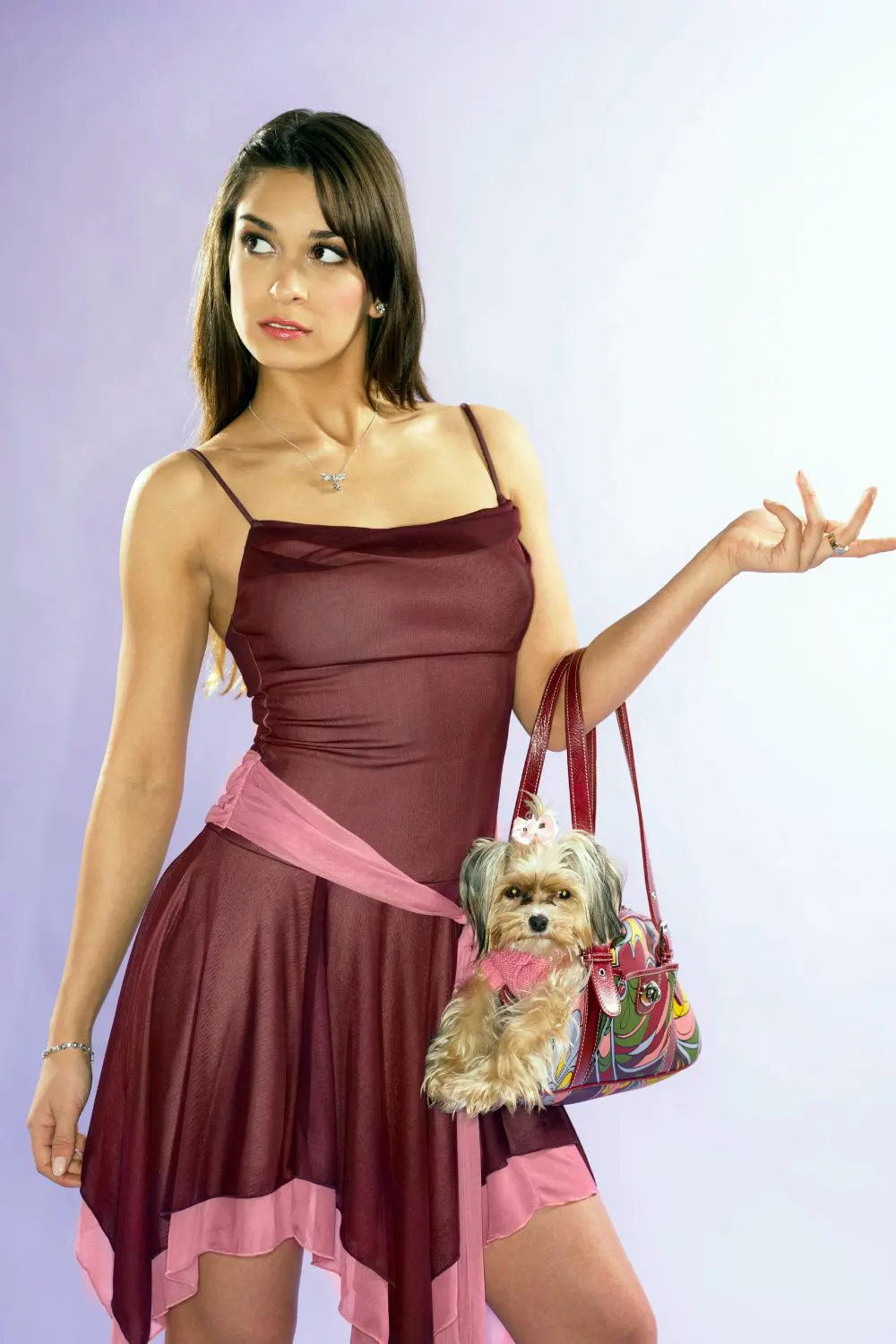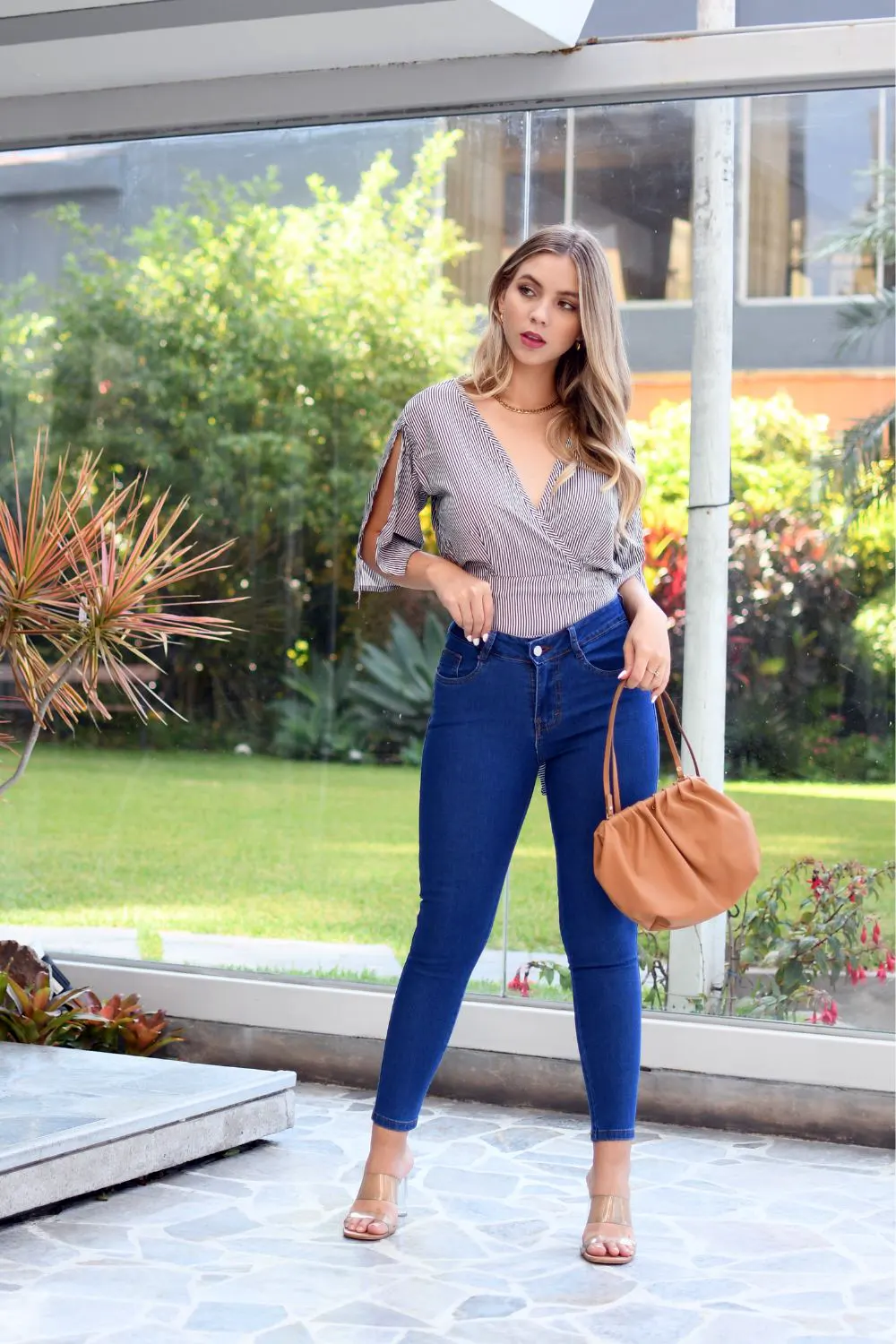Handbags have been an indispensable accessory for ladies throughout history. But why do women continue to carry handbags, and what key roles do they play in women’s lives? This comprehensive guide explores the multifaceted purposes and significance of handbags for ladies today.
Practicality
One of the most basic yet important reasons ladies carry handbags is practicality. At their core, handbags provide a convenient, portable way for women to transport personal belongings with them throughout the day.
The History of Handbags as Practical Carriers
Handbags have served a practical purpose since ancient times. Archaeological evidence shows that women in ancient Egypt, Greece, and Rome used small pouches and bags to hold everyday items like money, cosmetics, and jewelry.
During the Middle Ages and Renaissance, more lavishly decorated handbags emerged, but they continued to function as practical carriers for the essentials women needed.
It wasn’t until the 18th and 19th centuries that pockets became commonplace in women’s clothing. Yet even then, handbags prevailed as a useful accessory. Women carried elegant reticules and chatelaines, bags attached to a belt or waistband, to keep necessities close at hand.

The Modern Handbag: A Practical Necessity
Today, handbags remain a practical necessity for many women. The majority of women’s clothing still lacks adequate pockets that can accommodate all the everyday items a woman might need to carry.
Items like smartphones, wallets, keys, makeup, and other personal belongings don’t easily fit into the small, decorative pockets on most women’s clothing. A handbag provides the perfect solution.
Studies Supporting the Practicality of Handbags
The practical appeal of handbags for women has been backed up by various studies:
- A Pew Research Center study in 2020 found that 82% of women said they carry a handbag with them on a typical day.
- According to a 2021 survey by the NPD Group, the average woman owns about 7 handbags. This indicates women likely have different handbags suited for different contexts and needs.
- Data from the National Retail Federation shows that in 2022, women, on average, spent $200 on handbags annually. This ongoing expenditure suggests handbags are viewed as practical investments that get regular use.
Real-Life Examples of Handbags’ Practicality
Handbags efficiently fulfill women’s practical needs in all kinds of everyday scenarios:
- Running errands around town with hands full of shopping bags is made easier by tossing a wallet, phone, and other items into a tote or crossbody bag.
- Commuting to the office with a laptop, lunch, and work documents is seamless, with a roomy shoulder bag or satchel to keep everything organized.
- Traveling necessities like passports, tickets, and personal items stay secure in a sturdy, theft-proof handbag close to the body.
Fashion and Personal Style
Beyond practicality, handbags have become coveted fashion accessories that allow women to communicate their personal style. Handbags are no longer just functional items but also status symbols and an expression of individuality.
Handbags as Fashion Accessories
Initially simple bags for carrying daily essentials, handbags have evolved into an integral part of women’s wardrobes. Now, handbags make bold fashion statements in addition to serving practical purposes.
Modern handbags have become a way for women to express their tastes, interests, and individual flair through their choice of bag style, color, print, and brand.

Diversity of Handbag Designs and Styles
There is tremendous diversity in handbag designs and styles available today that cater to a wide spectrum of women’s fashion sensibilities:
- Classic luxury handbags, like the iconic quilted Chanel flap bag, exude timeless elegance.
- Luxe totes from international fashion houses like Gucci and Louis Vuitton evoke prestige.
- Intricately beaded evening bags complement cocktail attire.
- Oversized hobo bags or tiny clutches add styling flair to casual daywear.
- Earthy woven crossbody satchels reflect bohemian chic.
This vast array of options enables women to choose handbags that align with their personal tastes and complement different looks.
Handbags as Creative Extensions of One’s Style
In addition to complementing the overall look, today’s handbags function as creative extensions of a woman’s style. Unique handbags inject personal flair into an outfit.
Just as clothing and jewelry choices reflect individuality, distinctive or custom handbags can demonstrate personal interests and creativity.
For example, a floral embroidered bag may indicate a woman’s love of gardening. An old-fashioned bag with vintage detailing suggests nostalgia for past eras’ aesthetics.
Handsome leather gadget bags appeal to tech-savvy modern women. The options are endless.
Enhancing Overall Appearance
Handbags, when thoughtfully chosen, have the power to enhance a woman’s overall look. A bag’s shape, size, color, texture, and embellishments can influence the aesthetics and proportions of the entire outfit.
Petite bags worn close to the body help create the illusion of height. Oversized totes balance out slim jeans and a fitted top.
A pop of color or sheen in a handbag draws visual interest towards the face. Soft leather lends polish, while bags with edgy hardware or chains add urban cool. Like other accessories, handbags complete a look.
Studies Confirming the Fashion Impact of Handbags
Various research studies confirm handbags’ integral role in women’s fashion:
- According to an NPD Group study, 70% of women surveyed considered handbags to be a wardrobe essential.
- A study by the Accessories Council found that 80% of women believe accessories like handbags are key to amping up outfit options.
- Data from retail analytics firm Edited shows new handbag arrivals at major retailers grew by 33% between 2020 and 2021 as consumers continued spending on fashionable bags.
Real-Life Examples of Handbags’ Fashion Influence
Consider how handbags elevate outfits in these real-world scenarios:
- A clutch bag adds old Hollywood allure to a cocktail dress.
- Vibrant printed crossbody satchels give flair to jeans and t-shirt casual wear.
- A sleek leather laptop tote polishes travel clothes for business trips.
- Fringe details on a suede hobo bag complement bohemian-chic ensembles.
These examples demonstrate how thoughtfully chosen handbags not only carry personal items but also influence overall presentation and style.

Social Status and Representation
Handbags can also communicate social status and representation. Expensive, rare designer handbags often symbolize wealth and signal membership in elite social circles.
Handbags as Symbols of Status
Certain luxury handbag brands have cultivated an exclusive image that positions their bags as status symbols. Iconic brands like Chanel, Louis Vuitton, Hermès and Gucci imbue their handbags with a sense of prestige.
The high price tags, long waiting lists for customized bags, and recognizable logos convey exclusivity. Hence, being seen carrying one of these bags projects an air of privilege and cultural capital.
Owning rare or limited edition bags sometimes denotes being “in the know” about what’s coveted in fashion. Celebrities and influencers known for their luxurious lifestyles help fuel the positioning of such handbags as status symbols.
Branding and Perceived Status
The power of branding plays a key role in cementing certain designer handbags as status markers. Retail analysts estimate that up to 30% of the cost of luxury handbags stems from branding and marketing rather than just materials and production costs.
Brands like Chanel and Louis Vuitton exude prestige and history. Meticulous craftsmanship, signature details like logos or monograms, and limited availability all contribute to the aura of exclusivity. Therefore, sporting these branded bags signals, one can afford luxury.
Social Perception and Status Signaling
In certain cultural and social circles, carrying expensive designer handbags implicitly signals status. The pressure to own status symbol bags is sometimes tied to social pressures and wanting to fit in with one’s peer group.
For groups where appearances are paramount, branded handbags can act as shorthand to convey social standing or lifestyle.
Various studies confirm these social perceptions exist regarding luxury handbags:
- A study by Stanford researchers found women perceive other women carrying Louis Vuitton designer bags as being thinner, more attractive, and having higher status.
- Anthropological research reveals purchase choices around the consumption of branded luxury goods are heavily influenced by cultural norms and peer influences.
Real-Life Examples of Handbags as Status Symbols
Consider the following real-world examples:
- An affluent woman attending high-society events opts for a Hermès Birkin bag to convey her wealth and fashion pedigree.
- Young executives carry Gucci and Kate Spade totes to fit in among their corporate peers in a status-conscious work environment.
- College students save up for and carry premium bags on campus to show belonging to certain social circles.
In each case, carrying pricey, designer handbags communicates wealth and confers social status advantages for the bearer.
Storage and Organization
Another practical yet often overlooked role handbags play is in the storage and organization of personal belongings. Handbags provide excellent functionality when it comes to keeping daily essentials handy yet organized.
Handbags as Organizational Tools
Unlike pockets or pouches that quickly become jumbled, handbags are specifically designed to organize contents neatly. Specialized compartments keep items separate and easy to find when needed.
For instance, many handbags have dedicated sections or pockets for essentials like phones, keys, sunglasses, makeup, and pens. Some designer bags have built-in wallets or cardholders.
Backpacks and tote bags feature interior dividers and pockets to separate items by size, type, or frequency of use.
Catering to Specific Needs
Beyond organization, certain types of handbags are designed to meet particular practical needs:
- Large totes accommodate work or school supplies like laptops, notebooks, and textbooks.
- Crossbody bags leave hands free for errands and securely stow must-haves.
- Roomy shoulder totes carry baby care items like diapers and wipes.
- Small clutches or wristlets hold only evening essentials.
Having different bags suited for various contexts keeps necessities well-organized.

Studies Support Handbags’ Organizational Benefits
The utility of handbags goes beyond anecdotal evidence. Academic studies also confirm handbags aid organizations:
- Per a UCLA study, women who regularly carry handbags report higher satisfaction with their ability to stay organized compared to those who do not use handbags.
- Research from the University of Texas concluded women who use handbags could locate items faster compared to those who carry items loosely in pockets and bags.
Real-Life Examples of Handbags Promoting Organization
Consider how handbags facilitate the organization in everyday situations:
- A work tote with dedicated pockets for laptop and phone keeps documents and devices in order.
- A nylon crossbody bag allows moms to swiftly find wipes, snacks, or toys for kids while out and about.
- Kitschy cosmetic bags slipped into roomy purses to keep makeup, pills, and feminine products separate.
- A weekender’s compartments separate dirty laundry from clean clothes.
In all aspects of life, handbags promote tidy, stress-free organization.
Expression of Individuality
Beyond fashionable accessories, handbags let women express individuality and personality. Unique and artsy bag designs demonstrate creativity and interest.
Handbags as an Artistic Canvas
From their materials and construction to decorations and branding, handbags provide a versatile canvas for self-expression. With limitless options, women can select or even design bags reflecting their essence.
Vibrant handbags suit lively personalities, while classic designs appeal to refined tastes. Handmade details like crochet and embroidery demonstrate artistic talent.
Recycled materials show eco-consciousness and utility-focused designs reflect pragmatism. The bags a woman carries highlight what she holds important.
Handbags Broadcast Interests and Hobbies
Additionally, handbag motifs and embellishments can reflect hobbies and interests. A Vincent Van Gogh handbag shows off artistic knowledge, while a vintage sports team logo bag displays team loyalty.
Materials like fishing lures attest to outdoorsy pursuits, while whimsical shapes dazzle and delight. Handbags make excellent “wearable collages” to showcase passions.
Studies Confirm Handbags’ Self-Expressive Role
Academic research corroborates handbags’ role as visible touchpoints for projecting women’s personalities:
- An ethnographic study by UCLA researchers concluded that handbags actively help construct and reinforce personal and group identity.
- A survey of over 2,000 women by online stylist company Stitch Fix revealed over 60% of participants considered the bag they carried an important expression of individual style.
Real-Life Examples of Self-Expression Through Handbags
Consider how unique handbags demonstrate personality:
- A backpack splashed with colorful graffiti artwork illustrates street style.
- A petite bag covered in poetry lines represents bookish intellect.
- Oversized bags sporting bold tribal designs reflect global, indigenous roots.
- Vintage logo bags like Gucci and Dior evoke nostalgia for past eras and convey savvy collector status.
Like distinctive clothing or jewelry, handbags become part of a woman’s personal brand and self-expression toolkit.
Fashionable Accessories
Handbags clearly serve self-expression purposes but also act as fashionable accessories that pull ensembles together into complete looks. More than just practical items, handbags elevate and polish overall outfits.
Handbags as Styling Pieces
In the domain of accessories, handbags play an integral role in perfecting fashion looks. They add the finishing touch and elevate overall aesthetics.
Handbags introduce color, shape, and texture to balance outfits. They can complement clothing or provide contrast. Handbags also draw attention to certain features and create visual interest.
Handbags for Different Occasions
Certain bag shapes and styles complement particular occasions:
- A satin clutch punctuates cocktail attire.
- Leather totes add polish to business suits.
- Canvas carryalls tie together casual weekend wear.
- Small crossbodies keep night-out looks unencumbered.
Whether dressing up or dressing down an ensemble, handbags help pull off the intended vibe.
Handbags as Wardrobe Investments
Their ongoing popularity and sales back up the importance of handbags in women’s wardrobes. As reported by consumer data:
- Handbags are considered the most important accessory item by over 70% of women.
- Over 80% of women believe accessories like handbags are key for getting more use out of clothing items.
- In 2022, the average American woman spent over $160 on handbags annually.
Examples of Handbags Elevating Outfits
Consider how handbags styled in different ways make outfits more fashionable:
- A hobo bag adds laidback flair to jeans and a tee for brunch.
- A woven bucket bag complements breezy sundresses and sandals in summer.
- Shearling and leather totes bring a sophisticated edge to a pantsuit.
- Jewel-toned satin clutches make LBDs red carpet-ready.
It’s clear handbags play an integral role in elevating women’s outfits for all occasions. They tie looks together with stylish flair.
Symbol of Luxury
Beyond practicality and style, many designer handbags have become recognized globally as symbols of luxury. Iconic bags like the Hermès Birkin and Chanel Classic Flap represent the pinnacle of craftsmanship and exclusivity.
Designer Handbags as Luxury Symbols
Certain luxury brands have mastered the allure of aspiration. Their handbags are instantly recognized status symbols that represent exceptional, heirloom-quality craftsmanship.
Signature details like logos, patterns, and silhouettes identify the bags. Luxe materials like leather, ostrich, and alligator skins exude exclusivity.
Meticulous hand assembly and limited availability add to their preciousness. Long waitlists and stratospheric price tags cement their unattainability.
The Allure of Iconic Designs
Several iconic handbag designs have endured through decades to become legends:
- Hermès Birkin: This perfectly crafted leather or exotic skin bag with signature details connotes old money luxury. It has a mythic allure and instantly signals VIP status.
- Chanel Classic Flap: This quilted bag with interlocking CC hardware in precious materials oozes refined elegance. It evokes the brand’s glamorous founder, Coco Chanel.
- Louis Vuitton Speedy: The monogrammed leather body and versatile shape represent the originator of luxury travel bags. It has worldwide recognizability.
Owning these prized possessions represents gaining admission into an elite echelon. The bags represent far more than their functional properties alone.
What Luxury Handbags Symbolize
More than just beautiful accessories, luxury handbags symbolize:
- Wealth – Their astronomical prices act as economic barriers to purchase by the mainstream.
- Discerning Taste – Their iconic, enduring designs visually cue refined aesthetics.
- Achievement – Owning them is an aspirational milestone representing ambitions met.
- Social Capital – Spotting them denotes belonging among elites and connoisseurs.
Thus, designer handbags transcend materialism to embody cultural ideals and social standing.
Historical Significance
Finally, handbags hold importance due to their rich cultural history. They have long served functional needs and reflected women’s shifting social roles.
Evolution of Handbags Throughout History
As discussed earlier regarding practicality, handbags actually originated thousands of years ago and have continually adapted to suit women’s changing lifestyles.
In different eras, handbags took on forms like ancient Egyptian alabaster jars, medieval pouches tied to belts, Victorian-era reticules, and Art Deco minaudières.

Summary
Handbags accompany women through life’s journey. More than just accessories, they provide comfort, confidence, and self-expression.
Handbags neatly organize essentials, finishing off outfits with style. They tell stories, sharing adventures and milestones. Handbags symbolize independence and personal growth. Treasured keepsakes connect women across generations.
Handbags evolve yet remain steadfast companions, bringing joy and inspiration daily. When thoughtfully chosen, they perfectly capture women’s essence, becoming true extensions of self.
Helpful partners enable women to show up as the best versions of themselves.
FAQ
Why do people carry handbags?
People carry handbags for a variety of reasons, including practicality, fashion, and personal expression. Handbags are a convenient way to carry essential items such as keys, wallets, phones, and makeup. They can also be used to carry larger items such as laptops, books, and groceries.
What is the purpose of handbags in fashion?
Handbags are considered to be an essential part of women’s fashion. They can be used to add a touch of sophistication, elegance, or edge to an outfit. Handbags can also be used to reflect a woman’s personal style.
What do handbags symbolize?
Handbags can symbolize a variety of things, including status, wealth, and femininity. Designer handbags are often seen as a status symbol, as they can be very expensive. Handbags can also be seen as a symbol of wealth, as they are often made from high-quality materials such as leather and gold. Finally, handbags can be seen as a symbol of femininity, as they are traditionally associated with women.
What is the difference between a purse and a handbag?
The terms “purse” and “handbag” are often used interchangeably, but there is a subtle difference between the two. A purse is typically a small bag that is carried by hand, while a handbag is a larger bag that can be carried by hand or on the shoulder.
Are handbags still in style?
Yes, handbags are still in style. They are a classic and versatile accessory that can be used to dress up or down any outfit. There are a wide variety of handbags available to suit all tastes and budgets, so it is easy to find a handbag that is perfect for you.



